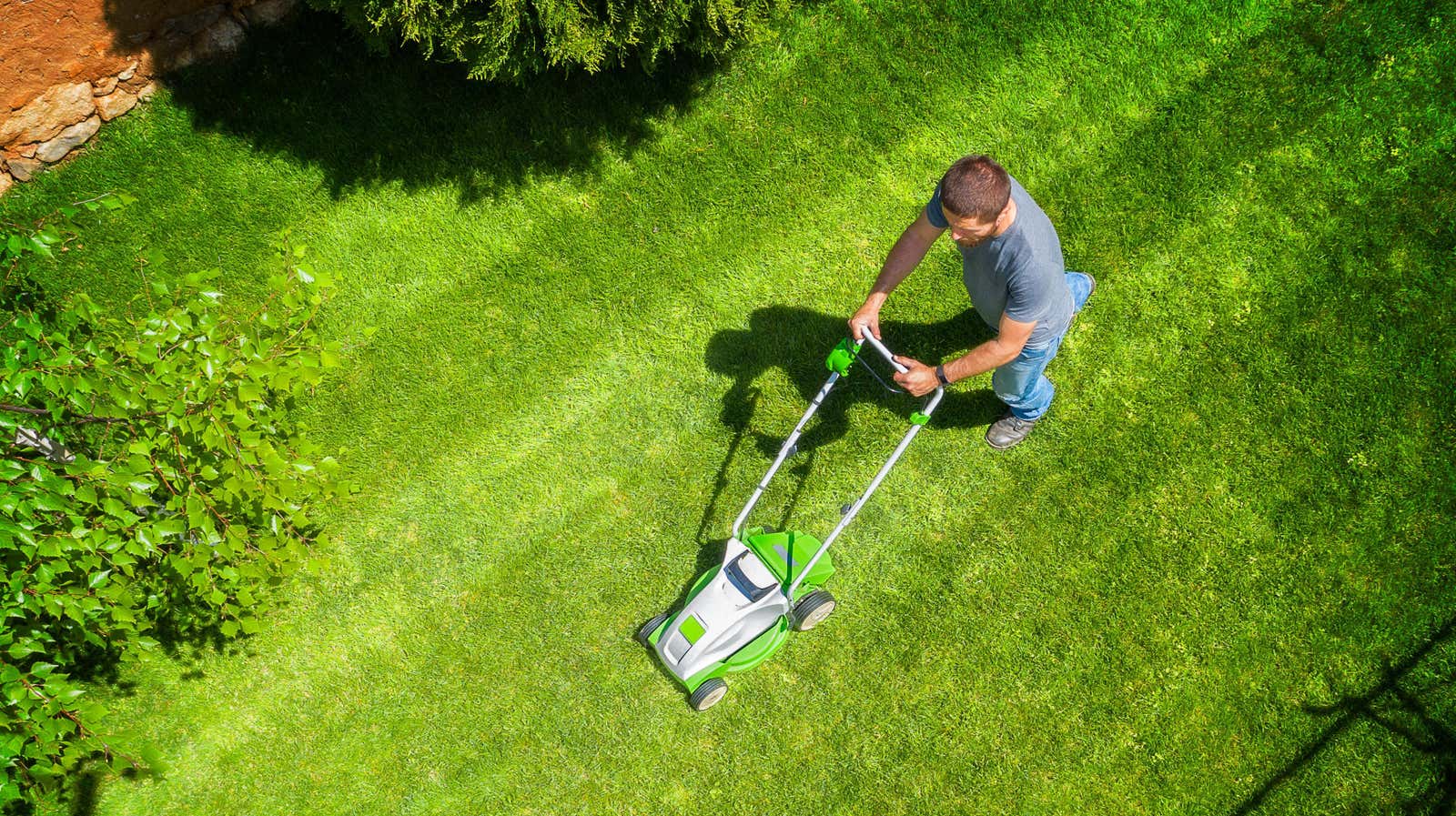Fuck the Lawns

It has never been so difficult to keep a lawn alive, and if radical climate intervention does not happen, for example, tomorrow, it will be the easiest thing for the rest of your life. I’m not going to be too dramatic, but: Have you ever thought about giving up?
This is a serious question. By all accounts, there should be no lawns, and we would be better off without them. From an environmental point of view, this is a real nightmare ; in sociological terms, they are somehow worse. If you have a lawn, the best thing you can do is let it die. That’s why and what to do next.
Lawns are beautiful and beauty is pain
The biggest problem with lawns is how they look, or more precisely, how we think they should look. According to a 2005 article on lawn aesthetics published by ecologist Lauren B. Byrne , “an idealized lawn is uniformly mowed, contains one kind of grass free of weeds and disease, and is green all year round.”
This definition underlines how fun the unrealistic lawns are as a concept. Green, lush weed-free grass requires a tremendous amount of maintenance in the form of water, fertilizer, weed control, pesticides, fossil fuels, electricity and manual labor. The larger the lawn, the more it is needed. When you consider that “lawns” include golf courses, parks, sports fields, campuses and other large green spaces, the scale quickly becomes incomprehensible. How many resources do American lawns use?
It is not clear how many lawns there are (but there are many)
Fun fact: nobody knows. The exact number of lawns in the United States remains a mystery. It was last measured in 2005, when Christina Milesi and her team at NASA’s Ames Research Center developed a formula that uses a region’s “impenetrable surface” (sidewalk) area to estimate the total lawn area. To do this, they analyzed aerial photographs of 13 megacities to see how much sidewalk and how much lawn there was. They found a fairly strong correlation between the two variables, derived a formula based on that correlation, and applied it to the entire continental United States.
This methodology is far from perfect, but it was the best they could do at the time, and it remains the only data point we have. The results were also truly insane; this 2005 NASA blog post sums them up nicely:
“Even at the most conservative estimate,” says Milesi, “I believe there are three times more hectares of lawn in the US than irrigated corn.” This means that lawns – including residential and commercial lawns, golf courses, and more – can be considered the largest irrigated crop in America in terms of area, covering a total of about 128,000 square kilometers.
If you’re wondering, 128,000 square kilometers is roughly 31.6 million acres, or 49,000 square miles. It’s a lot of lawn.
Lawns are often a must
A dark horse candidate for the Worst Lawn Fact is that many people are legally required to maintain one, even if they would rather have a garden. Homeowners’ Association (HOA) charter and municipal lawn ordinances govern not only the length and length of green grass, but also what else can be planted on it. Violation of these rules can lead to prosecution and fines; if they accumulate, you may even lose your home .
But HOA codes and “weed laws” ( which seem fake, but not fake ) aren’t just about grass. They are also a handy gimmick to keep certain people out of certain homes by controlling their appearance, and lawns are a huge part of a home’s aesthetic. It’s no coincidence that residential lawns in the United States are synonymous with single-family zoning, a practice that was literally invented to keep black people from moving to white neighborhoods .
How to get rid of your lawn
The good news about lawns is that transforming them into something better is easy and fun . The obvious first step is to start planting anything other than grass: trees, bushes, flowering plants, vegetables and fruits, or whatever else you like. Continuing education programs at public universities are an excellent resource for locally-specific local plant selection; see the National Wildlife Federation (NWF) Wildlife Gardens program for more general information. Keep in mind that you can leave some grass nearby if you like – introducing other types of plants will actually make it healthier, with less effort on your part.
If any of these changes are expected for a HOA fee, you still have several options. First, accept the fact that brown grass is a fact of life, not a threat to existence. Second, minimize the environmental impact of your lawn as much as possible : water less, let it grow longer to strengthen roots, and use cut grass as mulch. Use rakes and mowers instead of power tools whenever possible.
Finally, use your power as a homeowner to advocate for better rules: run for a seat on the HOA board, come to mayor’s office to shout at elected officials, or join a local lawn advocacy group. The law is frustratingly far from where it should be, but that could change: In June 2021, Nevada banned certain types of “non-functional turf” to save water. It won’t go into effect until 2027 and (shocking) excludes golf courses and single-family homes, but hopefully it’s a sign that better things are ahead.